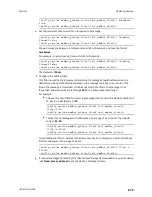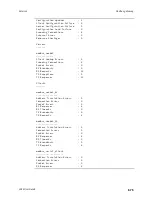
Services
Network Time Protocol
LR54 User Guide
681
1. Select the device in Remote Manager and click
Actions
>
Open Console
, or log into the LR54
local command line as a user with full Admin access rights.
Depending on your device configuration, you may be presented with an
Access selection
menu
. Type
admin
to access the Admin CLI.
2. Synchronize the device's local date and time:
> system time synch
24 Aug 22:03:55 ntpdate[2520]: step time server 52.2.40.158 offset -
0.000487 sec
NTP sync to time.devicecloud.com successful
>
3. Type
exit
to exit the Admin CLI.
Depending on your device configuration, you may be presented with an
Access selection
menu
. Type
quit
to disconnect from the device.
Manually set the system date and time
If your network restricts access to NTP servers, use this procedure to set the local date and time.
This procedure is available at the Admin CLI only.
Command line
1. Select the device in Remote Manager and click
Actions
>
Open Console
, or log into the LR54
local command line as a user with full Admin access rights.
Depending on your device configuration, you may be presented with an
Access selection
menu
. Type
admin
to access the Admin CLI.
2. Set the device's local date and time:
> system time set
value
>
where
value
is the The date in year-month-day hour:minute:second format. For example:
> system time set 2022-08-26 03:41:00
>
3. Type
exit
to exit the Admin CLI.
Depending on your device configuration, you may be presented with an
Access selection
menu
. Type
quit
to disconnect from the device.
Network Time Protocol
Network Time Protocol (NTP) enables devices connected on local and worldwide networks to
synchronize their internal software and hardware clocks to the same time source. The LR54 device
can be configured as an NTP server, allowing downstream hosts that are attached to the device's
Local Area Networks to synchronize with the device.
When the device is configured as an NTP server, it also functions as an NTP client. The NTP client will
be consistently synchronized with one or more upstream NTP servers, which means that NTP packets
are transferred every few seconds. A minimum of one upstream NTP server is required. Additional NTP






























